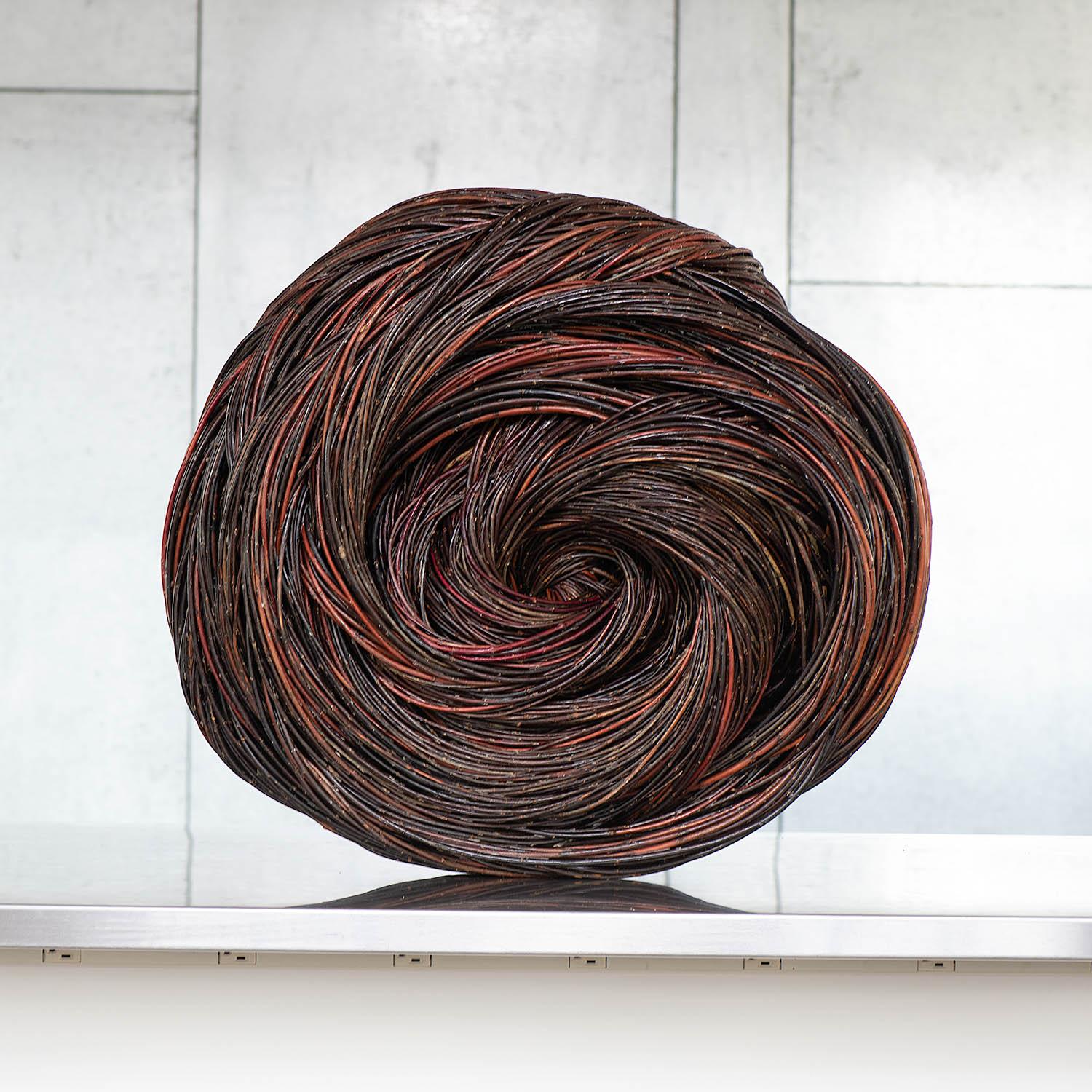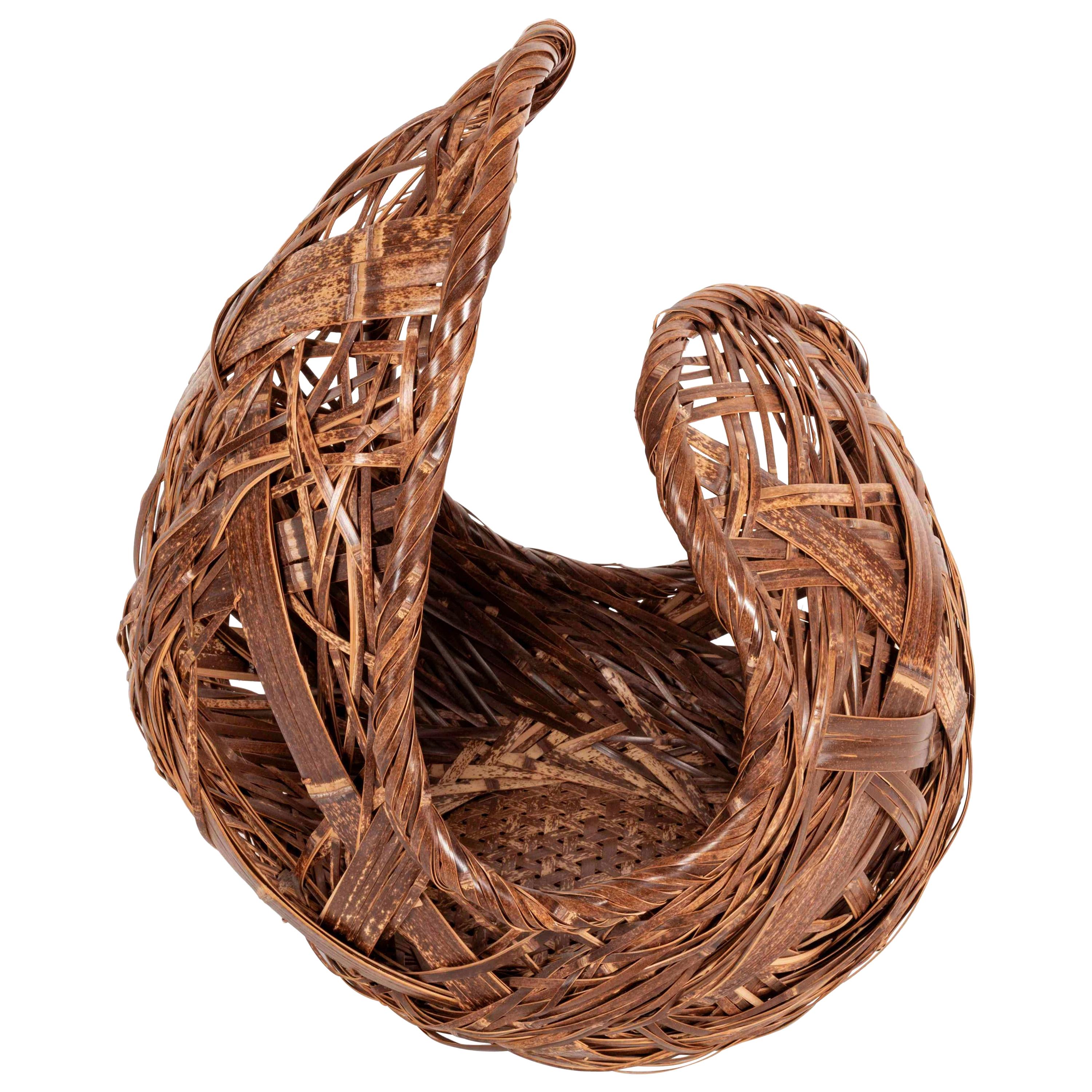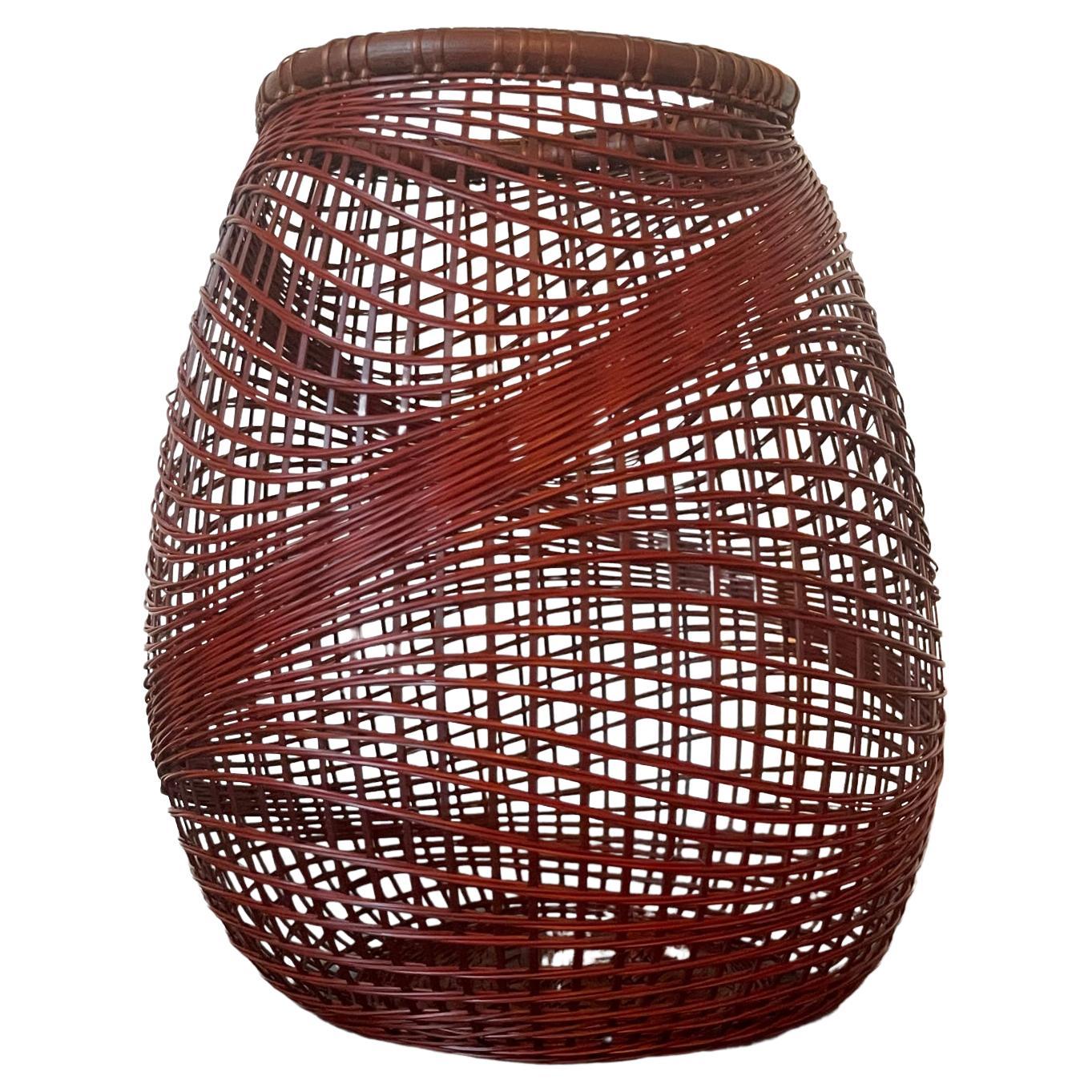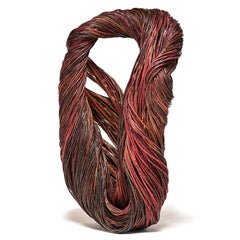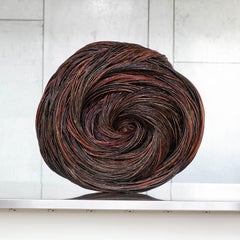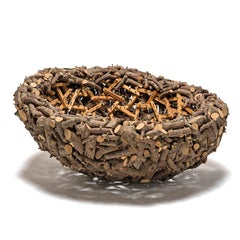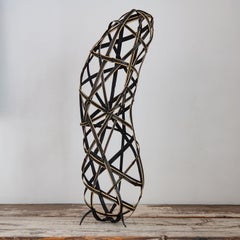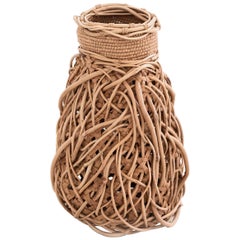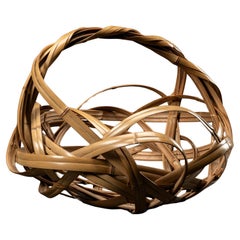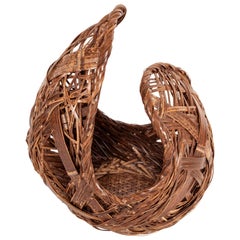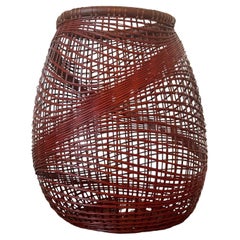Items Similar to Willow Wave Basket
Want more images or videos?
Request additional images or videos from the seller
1 of 5
Markku KosonenWillow Wave Basket1994
1994
$5,200
£3,860.72
€4,498.81
CA$7,219.28
A$8,075.22
CHF 4,202.39
MX$99,408.69
NOK 53,463.12
SEK 50,158.95
DKK 33,565.57
Shipping
Retrieving quote...The 1stDibs Promise:
Authenticity Guarantee,
Money-Back Guarantee,
24-Hour Cancellation
About the Item
Wood was integral to the artistic practice of the late Markku Kosonen of Finland. An important aspect of his work was the ability to express things; craftsmanship alone was not enough. “What begins as an ordinary utilitarian object soon turns into a creative work” he said. “The purpose of work such as this is to appeal to one’s emotions. For me, arts and crafts entail a spiritual processing of material, linking humanism to objects.”
- Creator:Markku Kosonen (1945 - 2010, Finnish)
- Creation Year:1994
- Dimensions:Height: 20.5 in (52.07 cm)Width: 36 in (91.44 cm)Depth: 36 in (91.44 cm)
- Medium:
- Movement & Style:
- Period:
- Condition:
- Gallery Location:Wilton, CT
- Reference Number:Seller: 36mk1stDibs: LU135929242752
Wood was integral to the artistic practice of the late Markku Kosonen of Finland. An important aspect of his work was the ability to express things; craftsmanship alone was not enough. “What begins as an ordinary utilitarian object soon turns into a creative work” he said. “The purpose of work such as this is to appeal to one’s emotions. For me, arts and crafts entail a spiritual processing of material, linking humanism to objects.” Kosonen is renown for his basket sculptures, often sculpted and woven from willow, birch and other woods. His artwork has been collected and exhibited across the globe including at the Helsinki Design Museum (Finland), the Museum of Arts and Crafts (Germany), the American Craft Museum (New York, New York), among many other notable institutions. During his remarkable career, he was the recipient of a 1-, 5- and 15-year Artist’s Grant from the Government of Finland, the Alvar Aalto Foundation Prize, and the Pro Finlandia Medal.
About the Seller
5.0
Vetted Professional Seller
Every seller passes strict standards for authenticity and reliability
Established in 1987
1stDibs seller since 2020
17 sales on 1stDibs
Typical response time: Several days
- ShippingRetrieving quote...Shipping from: Wilton, CT
- Return Policy
Authenticity Guarantee
In the unlikely event there’s an issue with an item’s authenticity, contact us within 1 year for a full refund. DetailsMoney-Back Guarantee
If your item is not as described, is damaged in transit, or does not arrive, contact us within 7 days for a full refund. Details24-Hour Cancellation
You have a 24-hour grace period in which to reconsider your purchase, with no questions asked.Vetted Professional Sellers
Our world-class sellers must adhere to strict standards for service and quality, maintaining the integrity of our listings.Price-Match Guarantee
If you find that a seller listed the same item for a lower price elsewhere, we’ll match it.Trusted Global Delivery
Our best-in-class carrier network provides specialized shipping options worldwide, including custom delivery.More From This Seller
View All"Lily" Contemporary Abstract, Biomorphic Willow Basket Sculpture
By Christine Joy
Located in Wilton, CT
Lily, red osier (willow), beeswax and damar resin, 43" x 28" x 16", 2002.
This biomorphic, abstract basket-sculpture was created by American fiber artist, Christine Joy (b. 1952, I...
Category
Early 2000s Contemporary Abstract Sculptures
Materials
Resin, Wood, Wax
Wheel, Christine Joy, Contemporary Abstract Woven Willow Sculpture
By Christine Joy
Located in Wilton, CT
Wheel, Christie Joy, willow, beeswax, damar resin, 24.25” x 28” x 9”, 2013.
This abstract woven willow sculpture was created by American fiber artist, Ch...
Category
2010s Contemporary Abstract Sculptures
Materials
Resin, Wood, Wax
"Cradle to Cradle" Contemporary mixed media sculpture, vessel
By Gyöngy Laky
Located in Wilton, CT
"Cradle to Cradle" apple, commercial wood, screws, 16" x 30" x 30", 2007.
This mixed media sculptural vessel was done by San Francisco-based artist, Gyöngy Laky...
Category
Early 2000s Contemporary Still-life Sculptures
Materials
Wood, Found Objects, Organic Material, Mixed Media
Ecdysis, Jiro Yonezawa, Abstract Bamboo Sculpture
By Jiro Yonezawa
Located in Wilton, CT
Ecdysis, Jiro Yonezawa, bamboo, urushi lacquer, 27" x 8" x 5.75", 2019.
This abstract bamboo sculpture is by Japanese artist, Jiro Yonezawa (b. 1956). Y...
Category
2010s Abstract Abstract Sculptures
Materials
Wood, Coating
"Last Light" Mary Merkel-Hess, Contemporary Abstract Textile Sculpture
By Mary Merkel-Hess
Located in Wilton, CT
"Last Light" Mary Merkel-Hess, paper, paper chord, 14” x 31” x 15”, 2018.
This colorful contemporary textile sculpture was done by American fiber artist, Mary Merkel-Hess. Merkel-Hess' work is often reflective of the natural landscapes from her childhood in the Midwest. Her work, "Last Light", was specifically inspired by a line from Willa Cather...
Category
2010s Contemporary Abstract Sculptures
Materials
Textile, Paper, Mixed Media
Large Shallow Bowl
Located in Wilton, CT
wood clothespins, wire
Category
1980s Contemporary Mixed Media
Materials
Wood
You May Also Like
Jennifer Zurick, "Entwined", Crafts Basket, Willow Bark and Honeysuckle Vine
By Jennifer Zurick
Located in Barcelona, ES
Jennifer Zurick
Entwined
Manufactured by Jennifer Zurick
Produced in exclusive for SIDE GALLERY
Kentucky (USA), 2019
Several materials
BIO
Jennifer Zurick is a self-taught artist specializing in black willow bark...
Category
21st Century and Contemporary American Decorative Baskets
Materials
Willow
Massive and exceptional Japanese bamboo hanakago 花籠 (ikebana flower basket)
Located in Amsterdam, NL
A massive and exceptional bamboo hanakago (ikebana flower basket). The unusual and modernist basket with a loop handle and showing fine wickerwork in thick strips of bamboo of a ligh...
Category
20th Century Japanese Decorative Baskets
Materials
Bamboo
Contemporary Japanese Bamboo Art Sculpture Yamaguchi Ryuun
By Ryuun Yamaguchi
Located in Atlanta, GA
A large and impressive woven bamboo sculpture by Japanese bamboo artist Yamaguchi Ryuun (born 1940-) entitled "Black Wave". The piece was made in 2000 and originally purchased from Tai Modern...
Category
Early 2000s Japanese Organic Modern Sculptures and Carvings
Materials
Bamboo
Japanese Bamboo Basket Ikebana by Abe Motoshi
By Abe Motoshi
Located in Atlanta, GA
A Japanese Ikebana bamboo basket woven by artist Abe Motoshi (Japanese, b. 1942). Constructed with lacquered reddish Madake bamboo and rattan with technique of open and irregular twinning, the basket features an organic form with undulating woven surface with wavy crossing lines. The basket appears simple and refined, but the making process is deceivingly sophisticated. Clean and precise, it is of the signature style of Abe Motoshi's.
The basket is signed on the base. It comes with the original tomobako storage box with inscription of the title on the lid as well as the artist's name and seal under the lead. A yellow wrapping cloth and a printout of the artist's biography from Tai Modern...
Category
Early 2000s Japanese Modern Sculptures and Carvings
Materials
Bamboo, Rattan
Jennifer Zurick Nesting Instinct, Contemporary Crafts Baskets, Willow Bark, 2020
By Jennifer Zurick
Located in Barcelona, ES
Jennifer Zurick
Manufactured by Jennifer Zurick
Produced in exclusive for SIDE GALLERY
Kentucky (USA), 2019
Nesting instinct
Willow bark, honey suck...
Category
21st Century and Contemporary American Decorative Baskets
Materials
Willow
Monden Kogyoku “Flower of Wave” Sculpture
Located in Lake Worth Beach, FL
Artist/Designer; Manufacturer: Monden Kogyoku (Japanese, b. 1916)
Marking(s); notes: signed, marking(s)
Materials: Madake bamboo
Dimensions (H, W, D): 10.5"h, 12"dia
Additional Info...
Category
20th Century Abstract Abstract Sculptures
Materials
Wood

